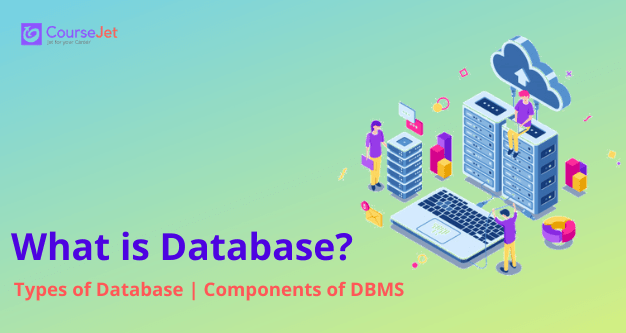What is a Database?

Share This Post
What is a Database?
Before we dive deep into the definition of a database, let us first understand what exactly is data? Data refers to a collection of facts or a piece of information in which inferences can be drawn. For example, the book name, author, genre, etc of a book refers to data.
Definition of Database
Types of Database
Databases are broadly classified into two categories
- Relational or Sequential Database
- Non-Relational or Non-sequential Database.
1. Relational Databases
These are the category of a database, wherein the relationship is established amongst the entities or tables. For example, if we consider an example of author records, there will be one table or Entity needed to store basic information of the authors using the primary key which can be the author id of authors. If the librarians wish to store the books written by each author, they can make a separate table for the same with primary key as book ids. We can establish the relation between both the tables by making the use of the primary key of the first table with the primary key of the second table. Examples of this database are- SQL, MySQL, Oracle, etc.
2. Non-Relational Databases
Here, the schema of the database is more adjustable. Documents are used to store the data. The documents need not follow any specific structure like Relational Database that is tabular. A collection can be formed of many documents with documents not having any relation between them. Examples of the non-relational database are- MongoDB, Cassandra, Neo4j graph database, etc.
Want to explore your SQL skills? Join CourseJet, SQL Server Developer Online Training, get certified and pave way for the best career.
Become a master in SQL Course
Get SQL Practical Assignments and Real time projects
Components of a database management system (DBMS)
The vital components of a DBMS or database management system are:
- Query Processor
- Database Manager
- Data Structure
1. Query Processor
2. Database Manager
The functions of it are backup, recovery operations of the database, controlling the consistency and integrity of data, etc.
3. Data Structure
Conclusion
A database is a crucial software in any organization for managing the data efficiently, securely while keeping into account the integrity of the data stored. The financial resources are required to build a database, but the cost spent is worth in storing the data that you can retrieve safely.
If you wish to pursue SQL Server DBA certification course online? Enquire the team of CourseJet now and start your journey!
Become SQL Certified Expert in 35 Hours
Get SQL Practical Assignments and Real time projects
Our Recent Blogs
Related Searches
